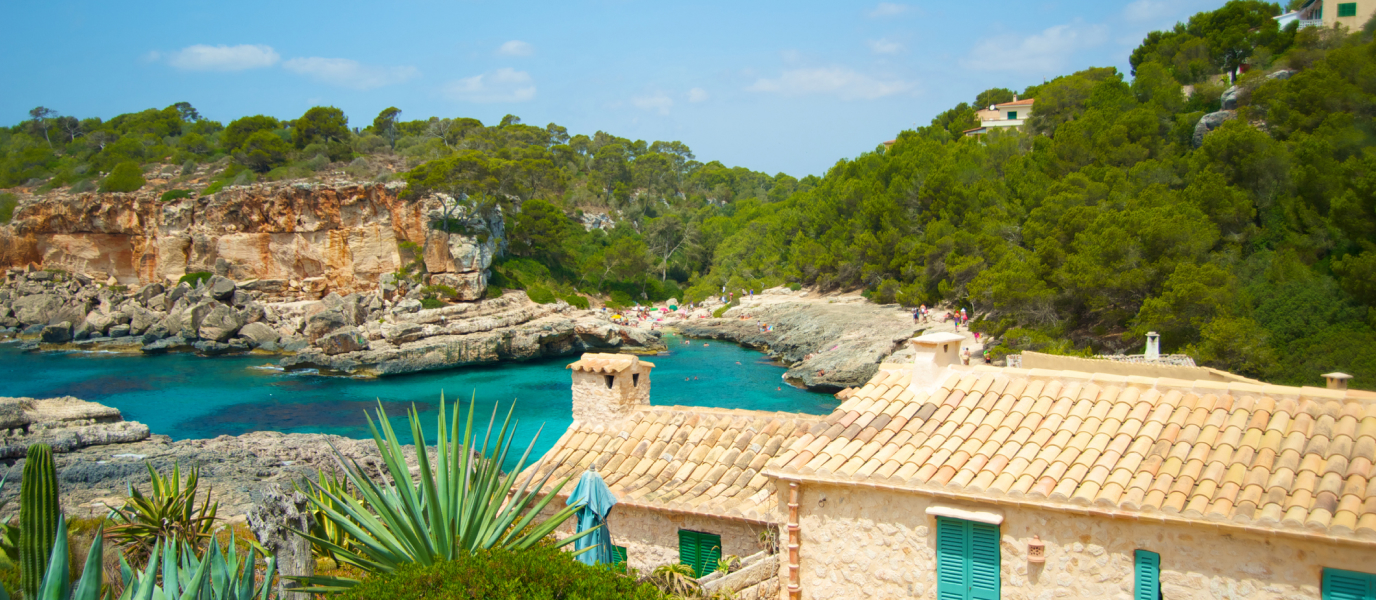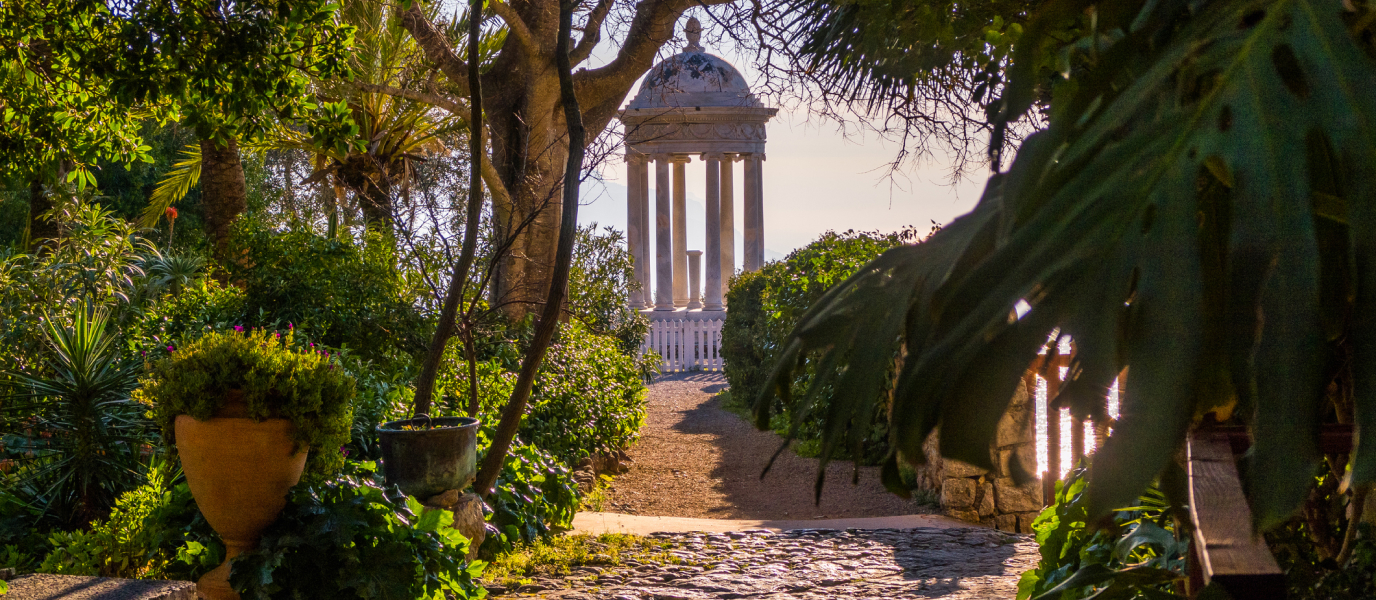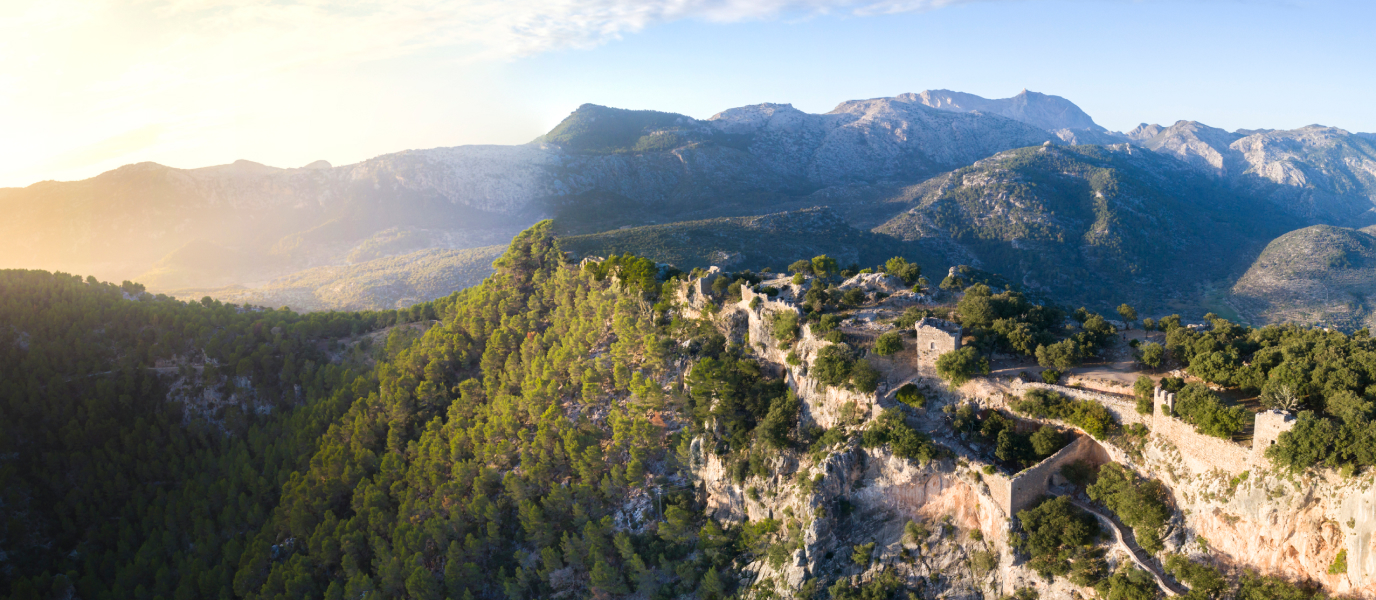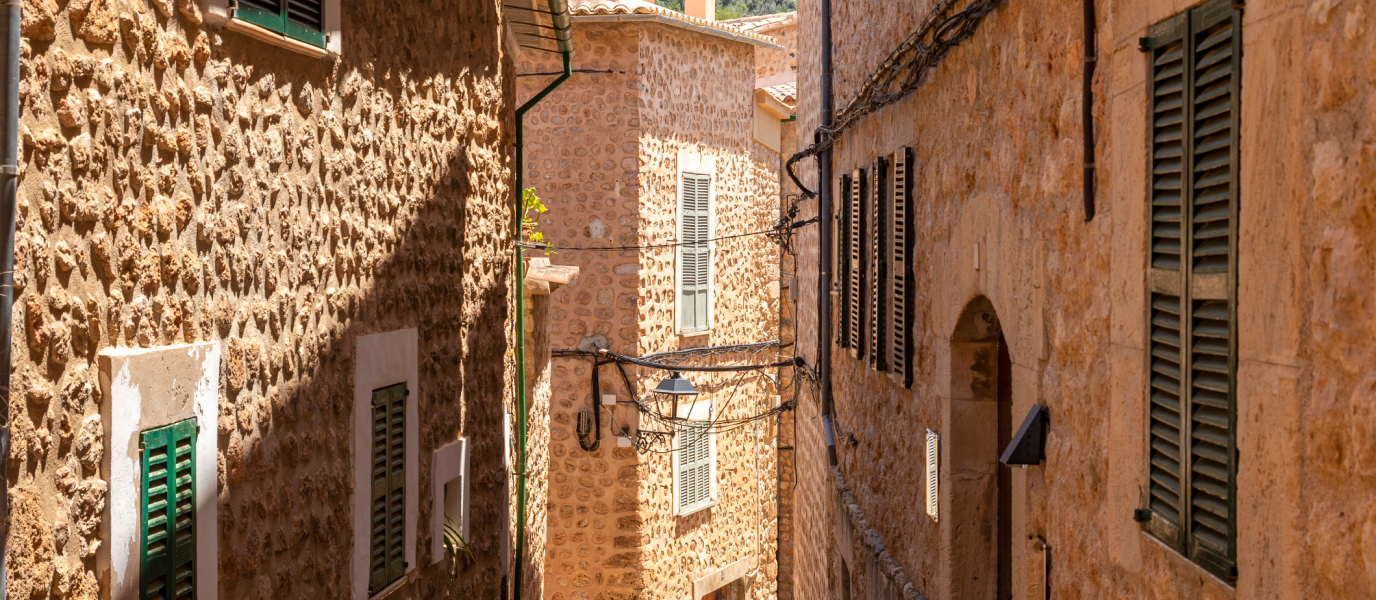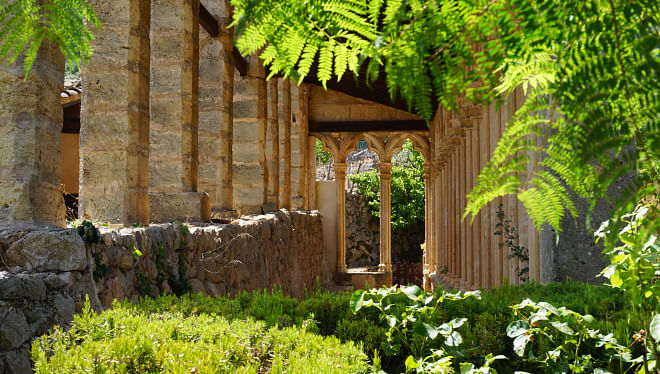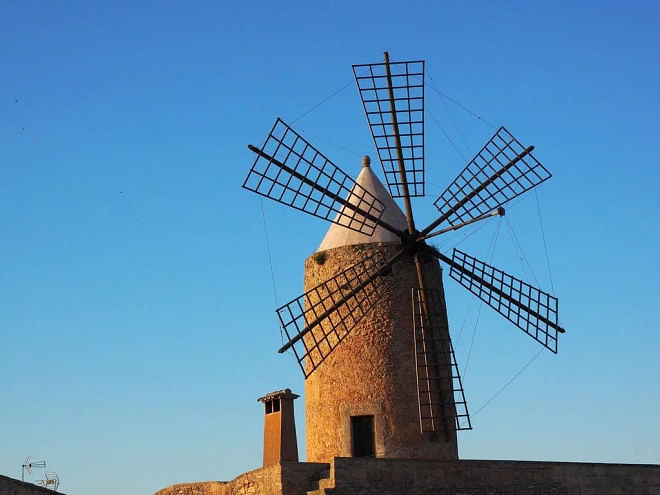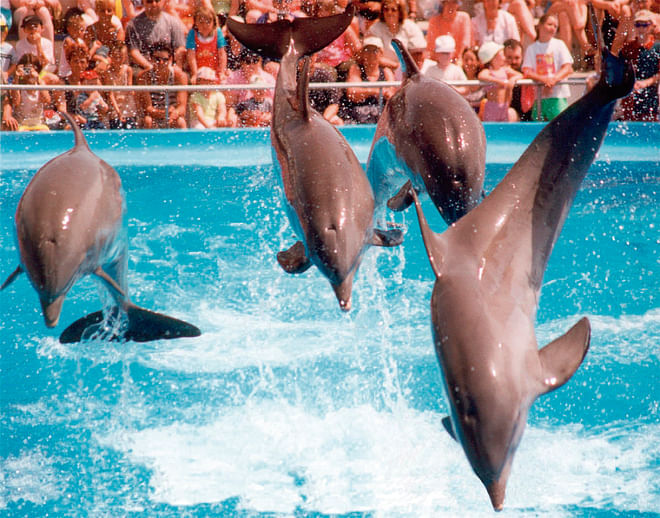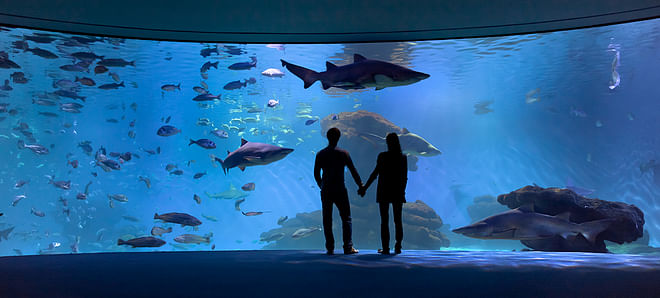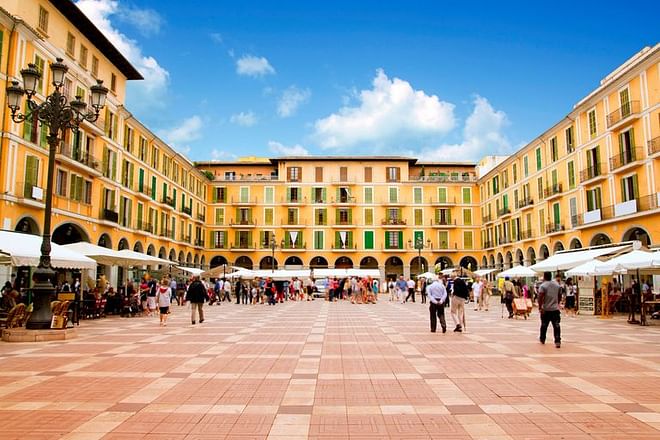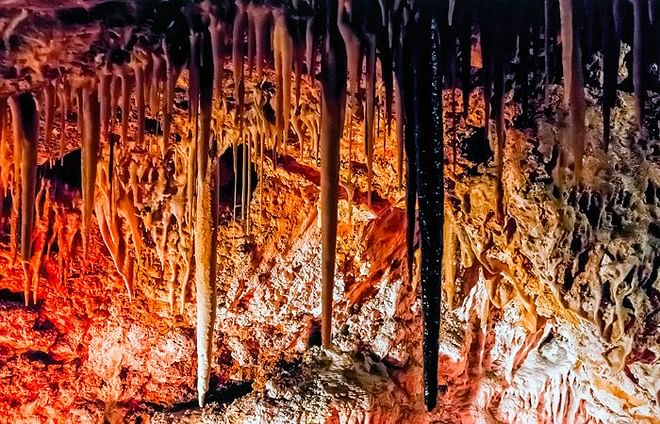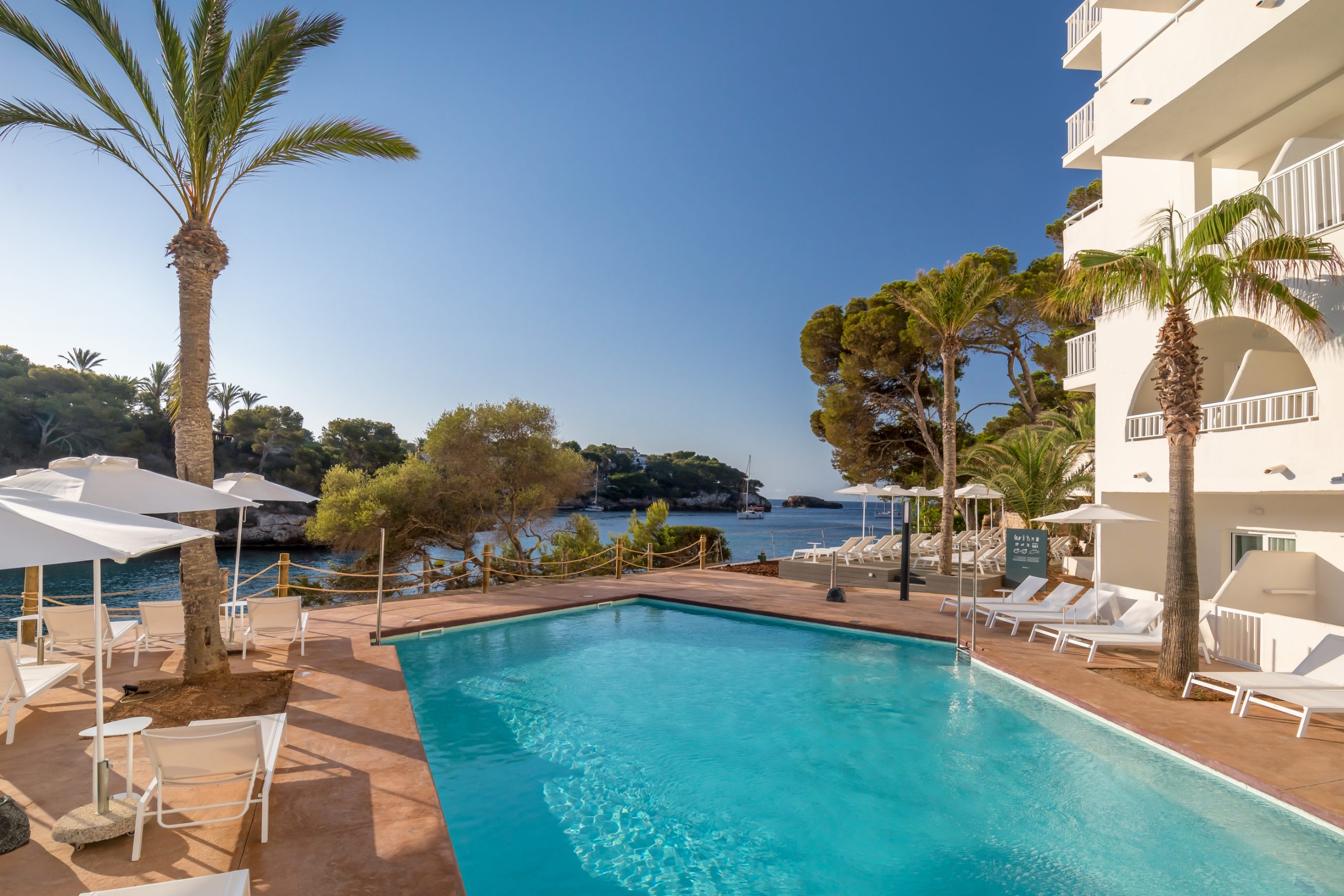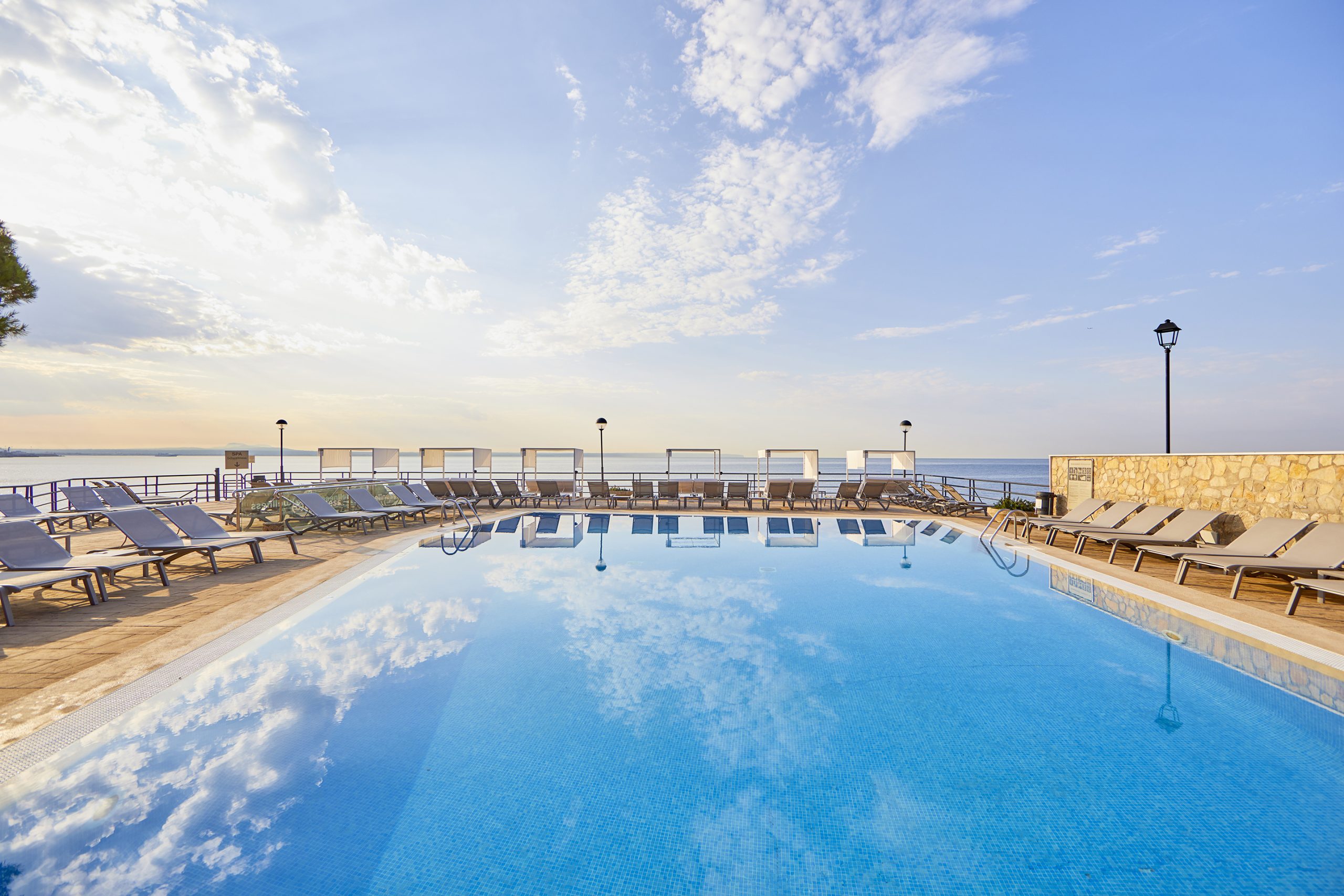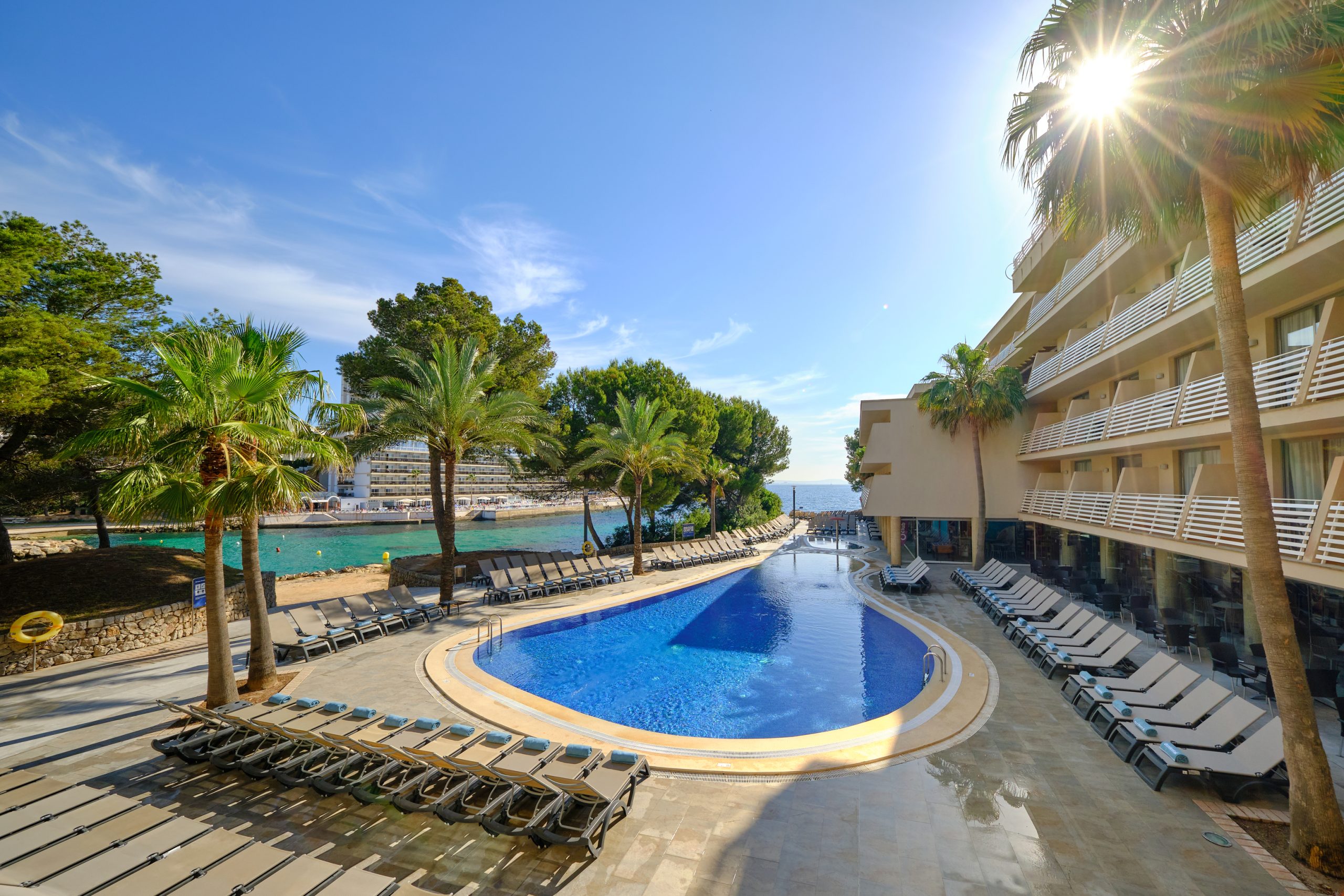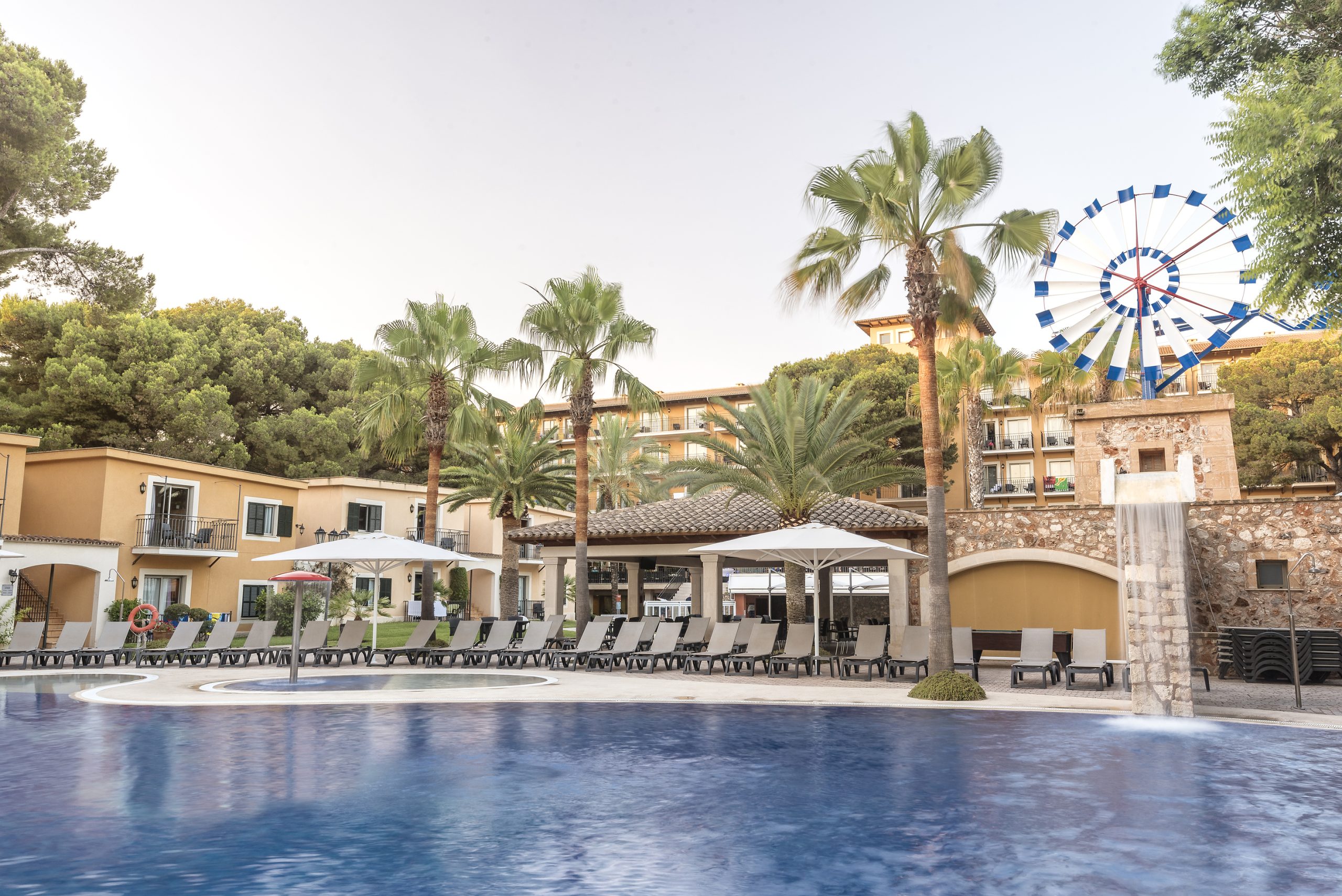In Latin, its name means ‘thriving’ because, even in the times of the Roman Empire, Pollença was already a small but prosperous city. You are sure to be amazed by the archaeological and artistic patrimony of this town, located to the north of the island. It is considered Majorca’s cultural cradle since it is the birthplace of numerous poets, artists and musicians. Take a stroll through its narrow streets, visit its churches, and discover its special personality. Its coastal scenery invites visitors to enjoy nautical sports while its mountain landscapes inspire hikes. In Pollença, there is something for everyone.
Pollença is made up of Formentor, Cala Sant Vicenç, Cala Bóquer and Port de Pollença. It was established as a municipality in 1229, following the Catalan conquest of Majorca. Back then, its centre was extended around the Nuestra Señora de los Ángeles church, which was handed over by the bishop to the Knights Templar in 1240.
What to see in Pollença
When visiting Pollença, you are sure to come upon the city’s symbol, the Fountain of the Rooster, in the Almoina Square. Pollença’s upper area extends to the cypress tree covered Calvari area, reached after climbing up a stairway with 365 steps, equalling the number of days in a year. Walking to the oratory, you will find a 14th century sculpture group of the crucified Christ with the Virgin at his feet, which leads the Procession of the Torches every Good Friday.
Another must-see is the Santo Domingo convent. Since 1962, its cloister has been the site of the Classical Music Festival, one of the most important music festivals of the Balearic Islands. It also boasts a local archaeological museum and has an interesting past that includes pirates. According to the legend, during the 16th century, the pirate Dragut, who served Red Beard, attacked the city with 1500 men, taking control of its booty (money, women and children) in the Sant Jordi oratory. A local resident, Joan Mas, managed to defeat Dragut, expelling him from the island with the help of only seven men. This local hero is buried inside the convent.
Be sure to also visit the gardens of Joan March, home to a medieval tower and the Casa Desbrull.
Exploring the surroundings of Pollença
You need not travel far from Pollença to see the unique Roman bridge of Majorca, although some historians claim that it is actually a Medieval reconstruction. It is located near the Ternelles path, when exiting the town. Other nearby sites that you should visit include: The Puig de María sanctuary and the Formentor peninsula. Here are some reasons why
- The Puig de María sanctuary. You will have to climb up to the Puig de María sanctuary if you want to enjoy the spectacular views of the Formentor peninsula (internal link), and even Menorca. The sanctuary dates back to the 14th century and it was originally used for defensive purposes. If travelling by car, you will reach it at the exit of km 52 of the motorway from Palma to Pollença. Another option is to hike there from the town. It is less than an hour away by foot and runs along a lovely holm oak forest.
- Formentor. The Formentor peninsula contains an icon of international renown. It is the Hotel Barceló Formentor, which has hosted such famed personalities such as Winston Churchill and John Wayne. This hotel-boutique has always been the site of inspiration for writers and musicians. Furthermore, its villas offer incredible views of the Mediterranean. And just below there is a long and narrow white sandy beach, with a background of pine trees and holm oaks. Its transparent waters are the perfect place to enjoy sporting activities such as snorkelling, diving, kayaking, paddle surf or sailing.
The inspiring Sant Vicenç cove
It doesn’t feel like we are in Majorca if we don’t take advantage of our time in Pollença to enjoy the sea and the touristic surroundings. So, we cannot miss out on a trip to the Sant Vicenç cove, one of the loveliest of all of Majorca, with its turquoise waters and fine sandy beaches. For years now it has inspired painters and artists. In fact, it is made up of three coves that are situated at the base of the imposing Cavall Bernat mountain: the San Vicenç cove, the Barques cove and the Molins cove, with the latter being the most difficult to access. And it is filled with archaeological remains, such as the caves of Bronze Age in Ariant de Baix, in L’Alzinaret, and in the Pinar de les Arenes.
Port de Pollença
Port de Pollença is one of the most important tourism areas of the island and is a favourite of foreign residents. Few would have imagined the success that this small area would one day attain given that it was home to only 20 residents during the 19th century. Its prime location, at only 6 km from Pollença, makes it the perfect place to spend a day at the beach in the calm bay surroundings. And be sure to admire its late 17th century tower, located at the Punta de la Avançada.
Restaurants in Pollença
You shouldn’t miss out on good food during your vacation, especially when in Majorca. Here, we recommend that you head to Passeig Saralegui, where there are numerous restaurants offering you an excellent fresh fish meal. If you want something extra special, two of the area’s most prominent restaurants are Los Faroles and Brisa Marina.
And there is no better end to an exciting day than a terrace at sunset. One of our favourites is Chivas, having a lively character and 1970s decor.

























































